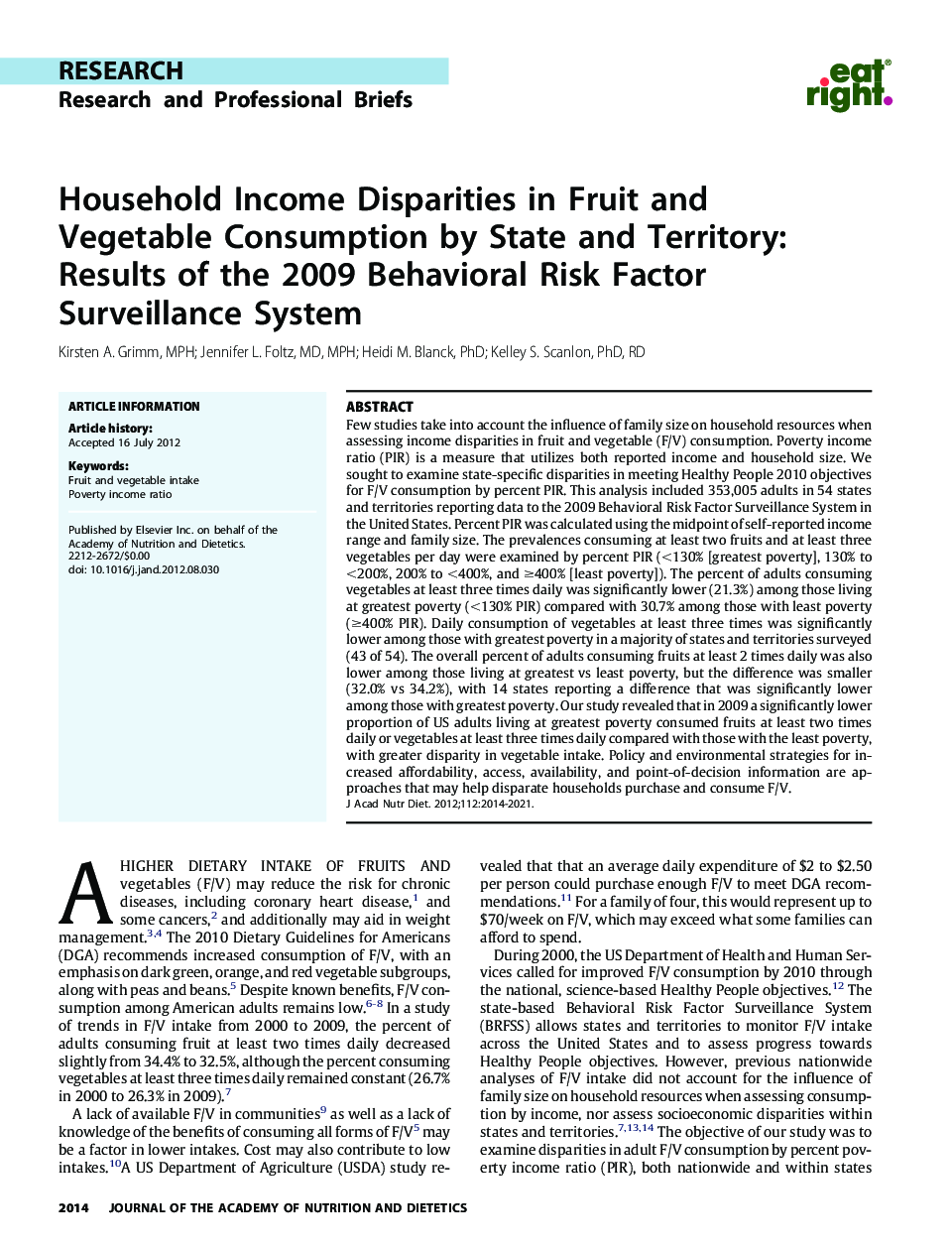| کد مقاله | کد نشریه | سال انتشار | مقاله انگلیسی | نسخه تمام متن |
|---|---|---|---|---|
| 2653554 | 1564086 | 2014 | 8 صفحه PDF | دانلود رایگان |
Few studies take into account the influence of family size on household resources when assessing income disparities in fruit and vegetable (F/V) consumption. Poverty income ratio (PIR) is a measure that utilizes both reported income and household size. We sought to examine state-specific disparities in meeting Healthy People 2010 objectives for F/V consumption by percent PIR. This analysis included 353,005 adults in 54 states and territories reporting data to the 2009 Behavioral Risk Factor Surveillance System in the United States. Percent PIR was calculated using the midpoint of self-reported income range and family size. The prevalences consuming at least two fruits and at least three vegetables per day were examined by percent PIR (<130% [greatest poverty], 130% to <200%, 200% to <400%, and ≥400% [least poverty]). The percent of adults consuming vegetables at least three times daily was significantly lower (21.3%) among those living at greatest poverty (<130% PIR) compared with 30.7% among those with least poverty (≥400% PIR). Daily consumption of vegetables at least three times was significantly lower among those with greatest poverty in a majority of states and territories surveyed (43 of 54). The overall percent of adults consuming fruits at least 2 times daily was also lower among those living at greatest vs least poverty, but the difference was smaller (32.0% vs 34.2%), with 14 states reporting a difference that was significantly lower among those with greatest poverty. Our study revealed that in 2009 a significantly lower proportion of US adults living at greatest poverty consumed fruits at least two times daily or vegetables at least three times daily compared with those with the least poverty, with greater disparity in vegetable intake. Policy and environmental strategies for increased affordability, access, availability, and point-of-decision information are approaches that may help disparate households purchase and consume F/V.
Journal: Journal of the Academy of Nutrition and Dietetics - Volume 112, Issue 12, December 2012, Pages 2014–2021
